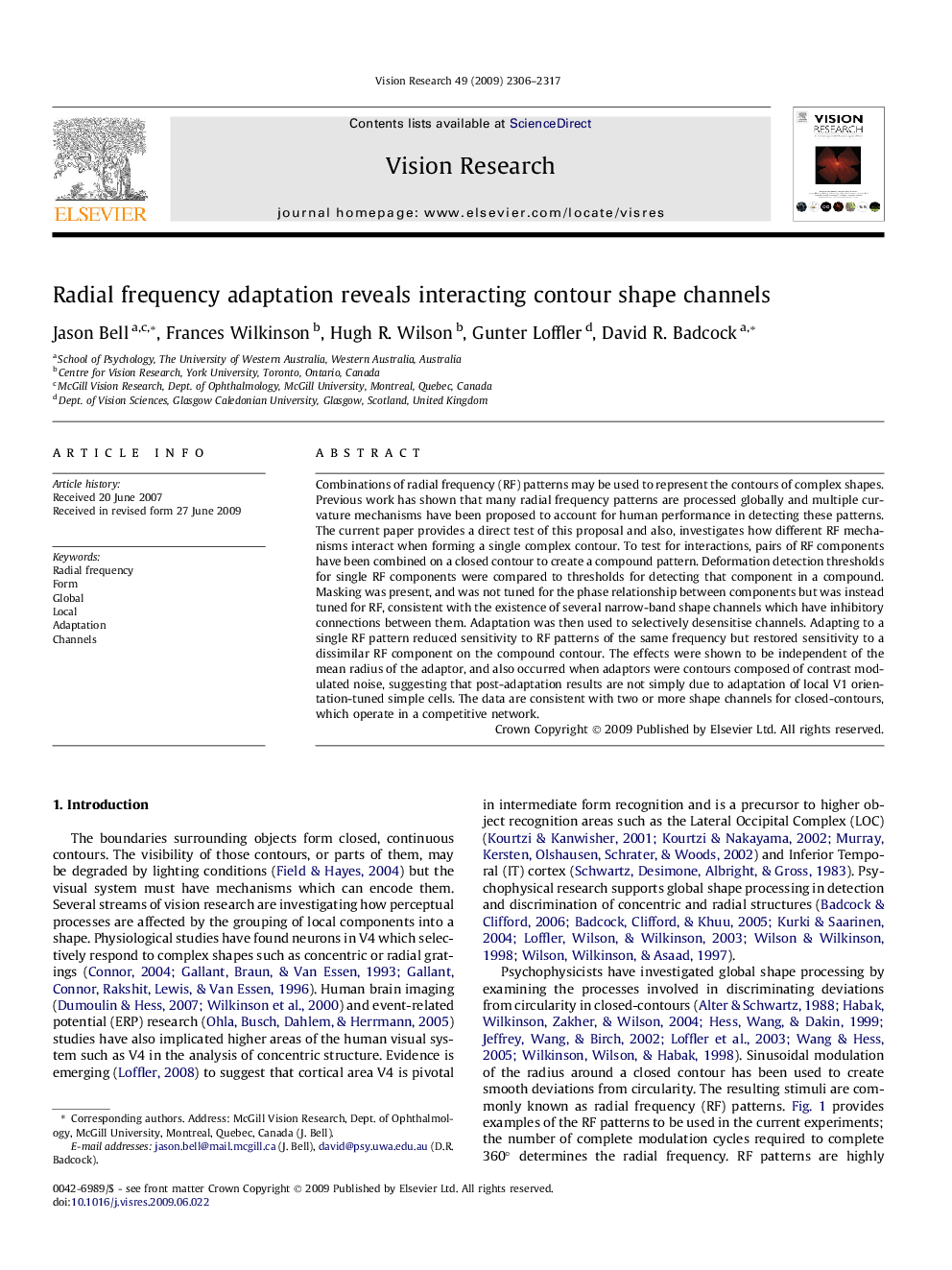| کد مقاله | کد نشریه | سال انتشار | مقاله انگلیسی | نسخه تمام متن |
|---|---|---|---|---|
| 6203941 | 1263501 | 2009 | 12 صفحه PDF | دانلود رایگان |

Combinations of radial frequency (RF) patterns may be used to represent the contours of complex shapes. Previous work has shown that many radial frequency patterns are processed globally and multiple curvature mechanisms have been proposed to account for human performance in detecting these patterns. The current paper provides a direct test of this proposal and also, investigates how different RF mechanisms interact when forming a single complex contour. To test for interactions, pairs of RF components have been combined on a closed contour to create a compound pattern. Deformation detection thresholds for single RF components were compared to thresholds for detecting that component in a compound. Masking was present, and was not tuned for the phase relationship between components but was instead tuned for RF, consistent with the existence of several narrow-band shape channels which have inhibitory connections between them. Adaptation was then used to selectively desensitise channels. Adapting to a single RF pattern reduced sensitivity to RF patterns of the same frequency but restored sensitivity to a dissimilar RF component on the compound contour. The effects were shown to be independent of the mean radius of the adaptor, and also occurred when adaptors were contours composed of contrast modulated noise, suggesting that post-adaptation results are not simply due to adaptation of local V1 orientation-tuned simple cells. The data are consistent with two or more shape channels for closed-contours, which operate in a competitive network.
Journal: Vision Research - Volume 49, Issue 18, 9 September 2009, Pages 2306-2317